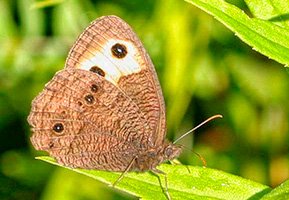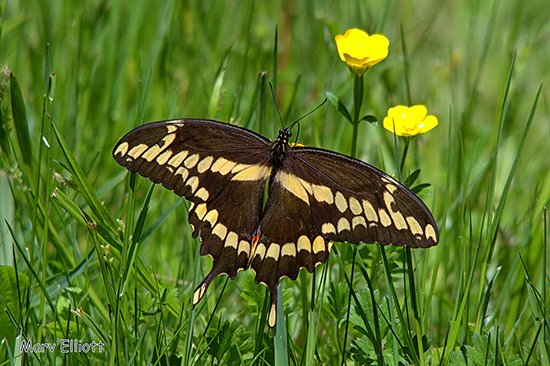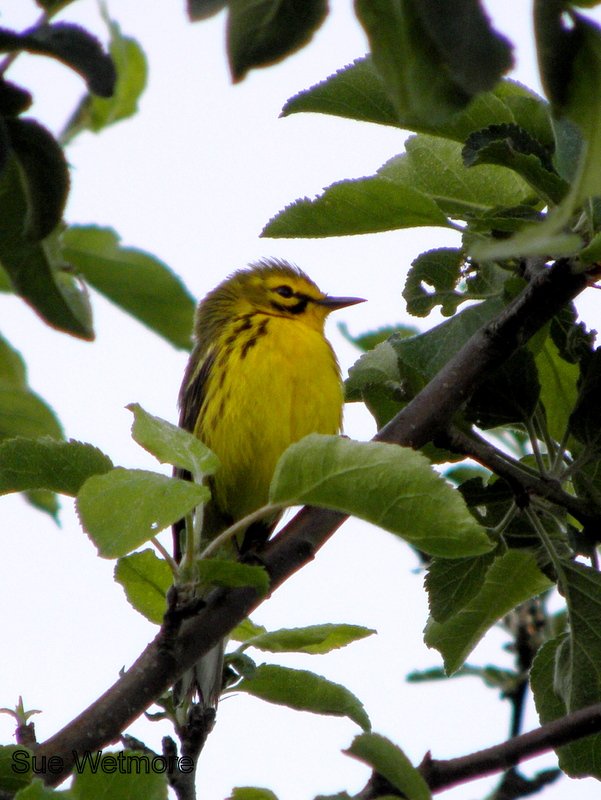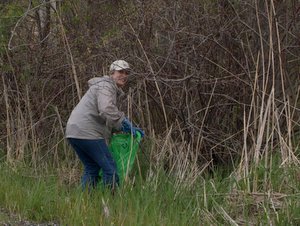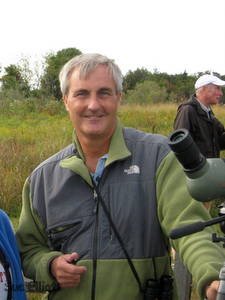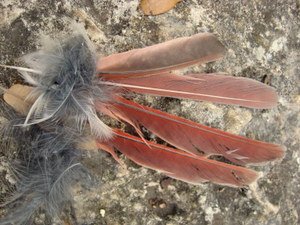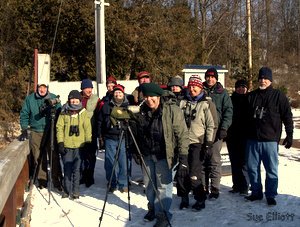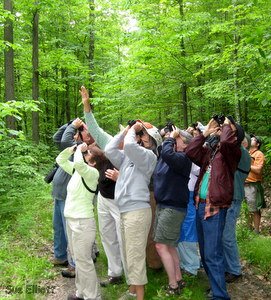Why, you ask, give up eight or nine hours of your time to participate in an annual count of the birds?
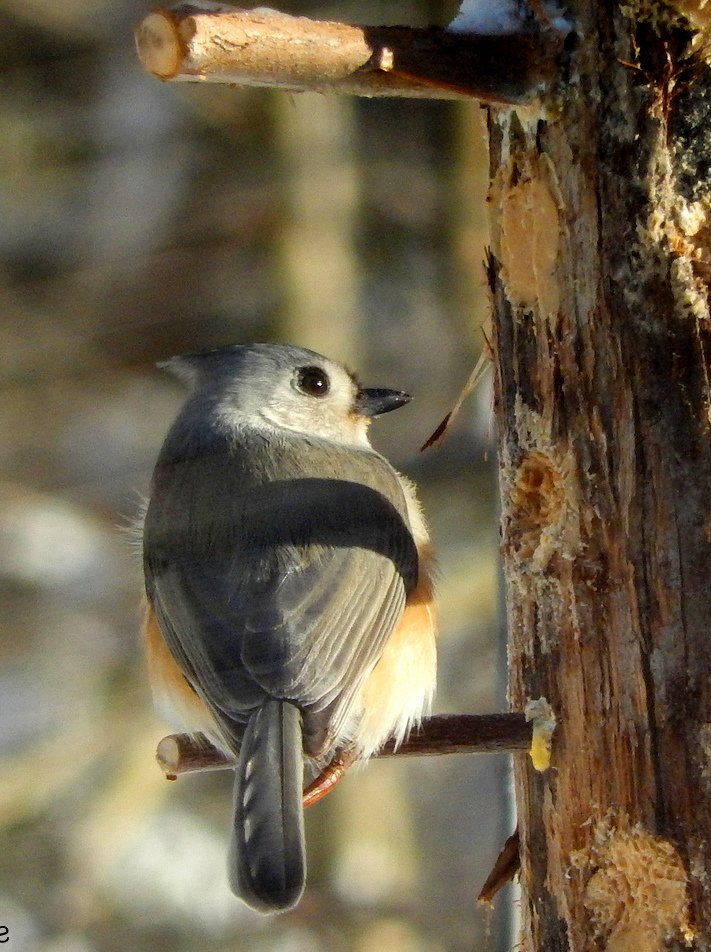 Tufted TitmouseCould it be because there are birds out there to be counted and birds are part of our natural world? And the more one knows about them the more one appreciates them and the greater the wonderment? Or is it because there are those fellow enthusiasts whose addiction and concentration may rival your own and whose company is to be enjoyed?
Tufted TitmouseCould it be because there are birds out there to be counted and birds are part of our natural world? And the more one knows about them the more one appreciates them and the greater the wonderment? Or is it because there are those fellow enthusiasts whose addiction and concentration may rival your own and whose company is to be enjoyed?
However, striking a more rational stance, don’t forget there is a tradition now stretching back one hundred and eleven years of generations of birders who were similarly motivated to record and to contribute their time and their efforts to an ever expanding database of information of which the local contribution is a mere miniscule, nevertheless essential part! With the enormous capabilities of computers to store data, Christmas Bird Counts have now gone global expanding beyond the U.S.A and Canada to many countries of the Western Hemisphere.
Saturday, December 31, was the appointed day for Rutland County’s thirty-eighth annual count. The weatherman’s prediction was for sleet and rain after midnight but we were spared! Intermittent light rain and a generally cloudy day were as favorable conditions as could be expected for this season of the year. Our standard 15-mile diameter circle was divided as usual into eight sectors. It was covered by eight designated teams of three to seven members each with the mandate and responsibility to record with due diligence the numbers and species of birds present. These teams totalling 38 individuals traveled 289 miles by car and another 38 miles on foot. While at home six households within the count circle maintained a watchful eye on their feeders over a combined period of 48 hours.
Following the day's efforts, and despite it being New Year's Eve, over two dozen participants gathered at the Proctor Library to enoy a bountiful potluck and to count down the day's birds.
With the last list submitted and a final tally made, the data for the local Rutland Count is ready to be transmitted electronically and gathered with between two to three thousand similar counts from across the hemisphere.
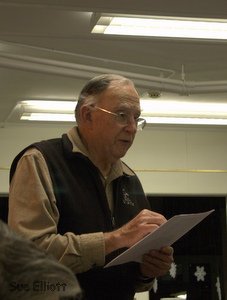 Roy tallies the day's resultsFor our Rutland County count, 58 bird species were observed on count day with two additional species not seen on count day but during count week (three days prior and three days following the actual CBC day), yielding a grand total of 60 species. As to individual birds, a total of 8,744 was tallied on count day. By way of comparison the running ten year average of species for the Rutland count is 52.3, an increase this year of 15%, and 9,200 individual birds, a decrease this year of 5%.
Roy tallies the day's resultsFor our Rutland County count, 58 bird species were observed on count day with two additional species not seen on count day but during count week (three days prior and three days following the actual CBC day), yielding a grand total of 60 species. As to individual birds, a total of 8,744 was tallied on count day. By way of comparison the running ten year average of species for the Rutland count is 52.3, an increase this year of 15%, and 9,200 individual birds, a decrease this year of 5%.
This year’s list:
Great Blue Heron (1), Canada Goose (819*), American Black Duck (14), Mallard (329), Hooded Merganser (1), Common Merganser (7), Northern Harrier (2), Sharp-shinned Hawk (1), Cooper’s Hawk (2), Red-tailed Hawk (24), American Kestrel (1), Merlin (CW), Peregrine Falcon (1), Ruffed Grouse (2), Wild Turkey (74), Wilson’s Snipe (3), Rock Pigeon (581), Mourning Dove (603), Eastern Screech Owl (1**), Barred Owl (3), Belted Kingfisher (2), Red-bellied Woodpecker (6*), Downy Woodpecker (65), Hairy Woodpecker (43), Northern Flicker (1), Pileated Woodpecker (10), Horned Lark (CW), Blue Jay (302), American Crow (794), Common Raven (19), Black-capped Chickadee (873), Tufted Titmouse (44), Red-breasted Nuthatch (14), White-breasted Nuthatch (97), Brown Creeper (20), Carolina Wren (8), Golden-crowned Kinglet (10), Eastern Bluebird (30), American Robin (136*), Northern Mockingbird (1), Gray Catbird (1), Cedar Waxwing (244), Northern Shrike (2), European Starling (2276), Yellow-rumped Warbler (3**), Northern Cardinal (79), American Tree Sparrow (91), Chipping Sparrow (1), Song Sparrow (3), White-throated Sparrow (7), Dark-eyed Junco (221), Snow Bunting (13), Red-winged Blackbird (73), Brown-headed Cowbird (5), Purple Finch (11), House Finch (149), Common Redpoll (29), Pine Siskin (15), American Goldfinch (195), House Sparrow (382).
BOLD Equal to previous Numerical Record.
BOLD* New Numerical Record.
BOLD** New Species to the Count.
The thirty-eight local Rutland counts have now tallied 100 species!
Historical information on Rutland's counts and CBCs across the hemisphere, click here.
 This past year saw the loss of two longtime supporters and participants of RCAS, Verna Harvey and Betty Barbarise.
This past year saw the loss of two longtime supporters and participants of RCAS, Verna Harvey and Betty Barbarise.